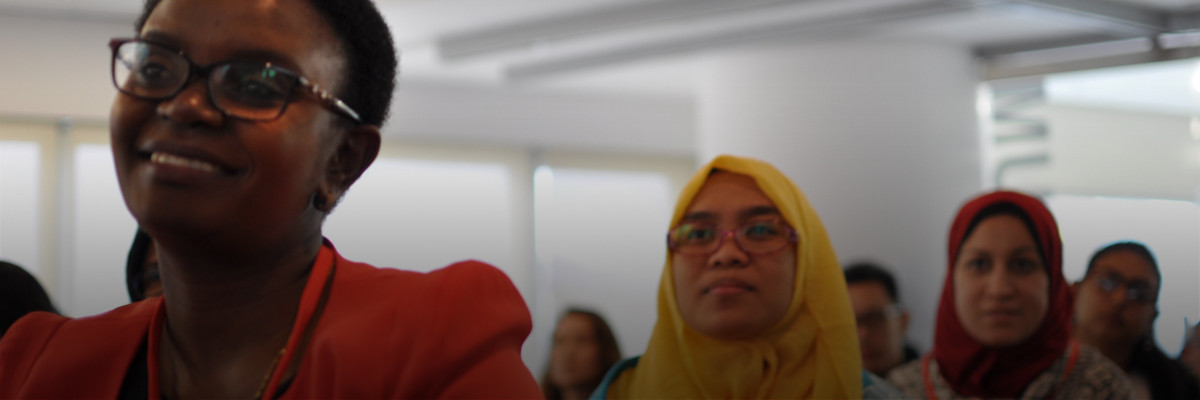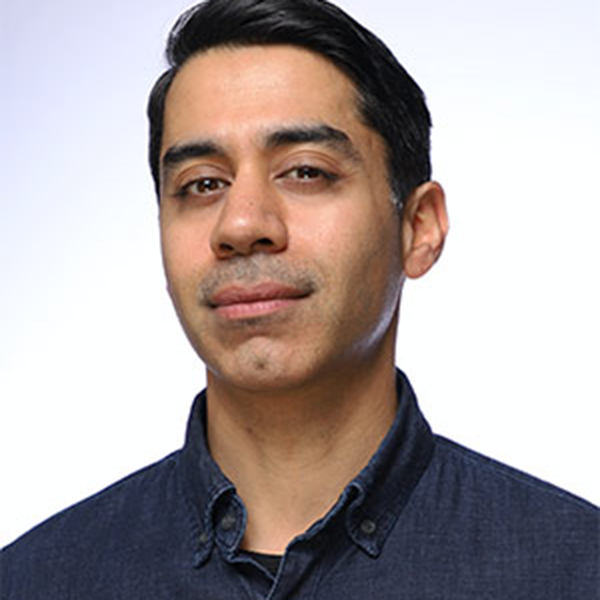
A few months ago, my colleagues and I visited a number of factories in India to launch BSR’s new HERfinance initiative, which aims to bring low-income workers into the formal financial system and help them better manage their incomes.
During one visit, a woman told us that her husband waits for her at the factory gates on the seventh day of every month and then takes her salary. In her view, he spends the money on unnecessary items, and she told us she wants a private, secure place where she can save and control access to her money.
Another factory employee told us he used informal means to send nearly his entire salary to his family in a neighboring state. This was his way of saving to fulfill his dream of paying for his sister’s wedding, but it was prone to loss or theft along the way.
These stories are common in the developing world. According to the World Bank, more than 2.5 billion adults, or 75 percent of the world’s poor, do not use formal financial services (PDF) to save or borrow money. Three systemic challenges are primarily responsible for this:
- Awareness: Many people who are accustomed to a cash-based economy are unaware of the benefits of using formal financial services. Conducting electronic transactions can seem risky, especially when an urgent need for cash arises.
- Physical access: Traveling to the nearest access point to conduct a bank transaction can take an entire day—time that is often better spent at work or with family.
- Eligibility: Even for basic bank accounts, the minimum balance may be too high for those with an unreliable income or an income that is mostly spent on basic necessities. In addition, documentation requirements may be too strict for people who are part of the informal economy.
With the majority of the world’s working poor employed in global supply chains, businesses have a unique opportunity to address these barriers to financial access. At the same time, businesses can benefit by deepening their relationships with suppliers and assuring that supply chain workers are paid on time, thereby directly improving their livelihoods. By vesting factory employees with knowledge and skills related to financial management, and connecting them to financial products and services, companies can empower workers in their supply chains to make sound financial decisions, make their incomes go further, invest in their futures, and manage risk.
With the launch of our HERfinance pilot project in India (which includes brand partners Ann Inc., Levi Strauss, Talbots, Li & Fung, Primark, and Timberland), this is a good time to explore one model for business to solve this challenge.
A Cross-Sector Partnership Approach
Based on BSR’s successful HERproject model, HERfinance links global brands, their suppliers, and NGOs to deliver a peer-to-peer education program on financial literacy to the world’s working poor. Like HERproject, which focuses on factory workers’ health, HERfinance is based on the premise that investing in worker livelihoods leads to tangible benefits for all involved. Participating brands see improved relationships with key suppliers; factory managers witness higher worker morale, lower administrative costs, and reduced turnover; and factory employees are able to make their incomes work better for them.
The program works by providing employees with practical information about personal finance in a culturally relevant manner through a series of brief workshops. These employees are then selected to serve as peer trainers for the rest of the workforce and for members of their communities. This peer-to-peer model creates a powerful ripple effect along existing communication networks.
Each partner in HERfinance has a distinct role: The brands provide access to suppliers and assist in obtaining commitments from the factories’ management. The factories provide access to their workforce, as well as time and space to conduct the training. And local NGO partners, which are familiar with the cultural and social environments of each region, conduct training for the employees and mentor the peer educators on an ongoing basis.
The HERfinance curriculum—which BSR developed based on globally recognized best practices in financial literacy training—has been reviewed by experts such as Microfinance Opportunities, Better Work, and Women’s World Banking. It covers seven topics:
- Basic numeracy skills
- An introduction to financial planning
- Saving
- Budgeting
- Borrowing responsibly
- Calculating interest
- Talking about financial matters with family members
While the curriculum is standardized, the partnerships with local NGOs allow us to customize training modules to make them relevant to the target population. These local partnerships also keep implementation costs low, and ensure that local organizations learn to address the challenge of financial access, which promotes the long-term sustainability of the initiative.
Piloting HERfinance in India
In evaluating places to launch HERfinance, it became clear that India was an ideal location. The sheer need in that country is enormous: The Reserve Bank of India (RBI) estimates that only 45 percent of the population has a bank account, which means more than 600 million people are excluded. The situation is worse in rural areas, where only 38 percent of households have a bank account. This is despite the comprehensive efforts of the central bank to encourage and even mandate expansion of the banking sector into underserved parts of the country, such as by:
- Requiring commercial banks to cover all villages with a population of 2,000 or more.
- Requiring that banks create an entry-level “no-frills” account that carries no minimum balance and has reduced documentation requirements for new customers.
The RBI also has established business models that allow commercial banks to partner with NGOs, microfinance institutions, and other community organizations that can open bank accounts on the bank’s behalf.
The central government is also supporting financial inclusion by establishing the aadhaar system, enabling all Indian citizens to obtain a unique identification number based on biometric data that can then be used to open bank accounts. Once the aadhaar numbers are well established, the government will disburse salaries, pensions, and other benefits electronically, directly into the bank accounts of beneficiaries.
Due to this regulatory support, mainstream institutions have created a number of innovative financial products for low-income workers. The State Bank of India (SBI), the country’s largest bank, with close to 20,000 branches, is already partnering with several factories to accept direct deposits into zero-minimum-balance “salary accounts.” Several banks are willing to accept a letter from factory management to identify workers who lack formal documentation.
With these systems that support access already in place, we have been able to focus the HERfinance pilot project in India on addressing the awareness gap. To understand the unique needs, aspirations, and financial behaviors of our target population in India, we started our project by working with Women’s World Banking, which conducted a number of daylong focus groups with a representative subset of the workforce at participating factories in Delhi and Bangalore.
The results of their research will be published later in the year, but their initial findings have shaped the training curriculum and reconfirmed for BSR that there was a distinct need for this work. For example, they found that many of the employees in the factories had financial goals but lacked a plan defining how to achieve those goals. Even among employees who had basic bank accounts, awareness was low about how to take full advantage of the banking system and what other services were available to them.
Our pilot project in India will also foster collaboration between participating factories and financial service providers to ensure that the right kinds of products are accessible to the target population. For example, the majority of factory workers in the north of India are migrants who tend to leave their jobs to return home during the holiday season, making it difficult for them to open a bank account. These people need access to low-cost remittance services and savings accounts that allow for access from any city or village. In contrast, most of the people working in Bangalore factories are women who live nearby. They traditionally keep savings in chit funds, to which community members contribute a set amount each month and are allowed to use the entire balance for a large purchase. These women may prefer to have a savings account that can be accessed only through biometric data, giving them more control over their savings.
The Future of HERfinance
Over the course of our pilot project in India, which will run through the end of the year, we will track every achievement and every challenge to evaluate how the training has changed the financial behaviors of factory employees. Are they more likely to create a savings goal? Are they talking about financial planning with their family members? Do they have more confidence and bargaining power in their households?
We will also look at how the factories are benefitting from the work. Are employees more content in their jobs? Has turnover, which sometimes exceeds 20 percent, been reduced? Is the factory spending less time on payroll than in the past?
And we will want to understand the value of the work to the participating brands. Do they have more assurance that employees in their supply chains are getting paid on time and receiving the right amount? Are they building the capacity of their suppliers to ensure they can maintain long-term relationships?
Based on the results, we will continuously improve HERfinance and expand into additional factories in India. We also aim to launch HERfinance in more countries, some of which may lack the regulatory infrastructure to support financial inclusion that exists in India. This will pose its own unique challenges and will require us to focus on greater engagement with financial service providers, and perhaps even regulatory authorities. We will document our journey through regular blogs, articles, and research reports.
Ultimately, we hope to prove once again—as we have with HERproject—that investing in your workforce makes your business healthier: more productive and more sustainable.
BSR’s latest sustainability insights and events straight to your inbox.
Let’s talk about how BSR can help you to transform your business and achieve your sustainability goals.
